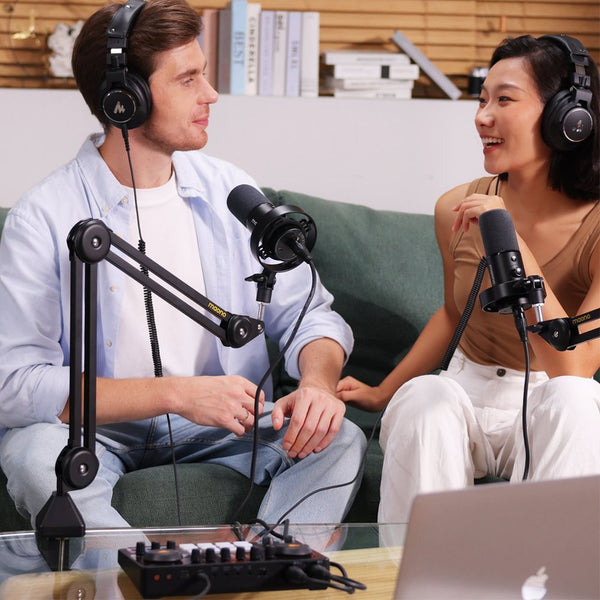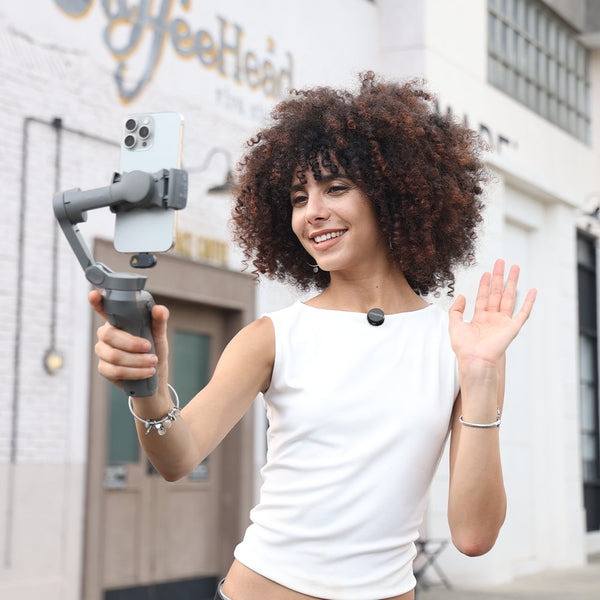Conducting in-depth research about a low-carb diet is essential if you are a beginner who wants to use this method for weight loss.
At first, beginners may find it intimidating to start this kind of diet, but in the long run, the body just gets the hang of it.
For starters, you should determine which foods are high in carbs and which are low in carbohydrates. As time goes by, you will be able to tell which foods are high or low in carbs just by looking at them.
Starting a new diet can feel overwhelming, especially when information online seems contradictory or complex. If you're considering a low-carb diet, you're not alone—it’s one of the most popular nutritional approaches for weight loss and overall health. Whether you're following this lifestyle privately or sharing your journey through a vlog using a wireless microphone, staying informed and consistent is key.
However, what exactly is a low-carb diet? And how does it differ from keto?
A low-carb diet reduces your intake of carbohydrates—sugary foods, pasta, and bread—and replaces them with protein and healthy fats. This shift helps the body burn fat for energy more efficiently, potentially leading to weight loss, better blood sugar control, and improved mental clarity.
While low-carb and keto are often used interchangeably, they aren't quite the same. The ketogenic diet is a stricter form of low-carb that drastically reduces carbs (usually under 20g per day) to push your body into a state of ketosis—where fat is the primary energy source. A general low-carb diet allows a more flexible carb range and isn’t necessarily focused on ketosis.

How to Start a Low-Carb Diet Without Feeling Overwhelmed
The key to starting a low-carb diet successfully is preparation. Begin by cleaning out your pantry of high-carb snacks and processed foods. Make a grocery list filled with low-carb essentials like:
-
Eggs, meat, poultry, and fish
-
Leafy greens (spinach, kale, romaine)
-
Low-carb vegetables (broccoli, zucchini, cauliflower)
-
Healthy fats (avocado, olive oil, nuts)
Next, plan a few simple meals for the week to avoid falling back on old habits. Keeping meals basic in the beginning—like grilled chicken with steamed vegetables—helps you adjust gradually.
How Many Carbs Should I Eat Daily on a Low-Carb Diet?
This depends on your goals. Most low-carb diets fall within these ranges:
-
Liberal low-carb: 100–150g carbs/day (good for maintenance or light weight loss)
-
Moderate low-carb: 50–100g carbs/day (weight loss and blood sugar control)
-
Strict low-carb or keto: under 50g carbs/day (for faster fat burning or therapeutic reasons)
Tracking your intake using an app like MyFitnessPal or Carb Manager can help you stay on course.
Is a Low-Carb Diet Safe for Beginners?
Yes, for most healthy adults. However, those with underlying health conditions—like diabetes or heart issues—should consult a doctor or registered dietitian before starting. Beginners may experience side effects in the first week, which are temporary and manageable (more on that below).
What Foods Are Allowed on a Low-Carb Diet?
Here are staples of a low-carb eating plan:
-
Proteins: Eggs, beef, pork, chicken, turkey, salmon, tuna
-
Vegetables: Spinach, kale, zucchini, bell peppers, mushrooms
-
Fats: Olive oil, coconut oil, butter, nuts, seeds, avocado
-
Dairy: Cheese, Greek yogurt (unsweetened), cream
-
Low-sugar fruits: Berries in moderation
What Carbs Should I Avoid Completely?
Eliminate or reduce these high-carb items:
-
Sugar (soda, candy, baked goods)
-
Grains (white rice, bread, pasta, cereal)
-
Starchy vegetables (potatoes, corn, peas)
-
Sweetened beverages and alcohols
-
Most processed snack foods
More FAQs on the Low-Carb Diet:
What Are Easy Low-Carb Meals for Busy People?
-
Egg muffins with cheese and spinach
-
Lettuce-wrapped burgers
-
Grilled chicken salad with olive oil dressing
-
Zucchini noodles with pesto and shrimp
-
Low-carb meal-prep bowls: grilled meats + non-starchy veggies
Batch cooking and meal prepping on weekends can make low-carb eating simple throughout the week.
What Are the Side Effects in the First Few Days?
Many beginners experience what's called the "keto flu" in the first 3–5 days, including fatigue, headache, irritability, or nausea. This is due to the body adjusting to fewer carbs and lower insulin levels.
How Do I Avoid the “Keto Flu” or Carb Withdrawal?
-
Stay hydrated: Drink at least 2–3 liters of water daily
-
Replenish electrolytes: Add sea salt to meals, consider magnesium or potassium supplements
-
Eat enough fat: Healthy fats help your body transition to fat burning
Will I Feel Tired or Moody When Cutting Carbs?
Some people do, especially if reducing carbs drastically. However, energy levels often stabilize and improve after the initial transition. A gradual approach to cutting carbs can minimize mood swings and fatigue.
How Can I Deal with Cravings for Bread or Sugar?
Cravings are common but manageable:
-
Eat more fat and protein to stay full
-
Find low-carb substitutes (like almond flour bread or sugar-free chocolate)
-
Distract yourself with a walk, water, or deep breathing
Cravings usually diminish significantly after 1–2 weeks.
Can I Eat Out While on a Low-Carb Diet?
Absolutely! Opt for:
-
Grilled meats or fish
-
Salads with oil-based dressings
-
Bunless burgers
-
Sides like steamed vegetables instead of fries or rice
Just ask questions about sauces and preparation methods, as many contain hidden sugars or starches.
Will a Low-Carb Diet Help Me Lose Belly Fat?
Low-carb diets can be particularly effective at reducing visceral (belly) fat. This is due to lower insulin levels, reduced bloating, and more efficient fat metabolism.
How Long Before I Start Seeing Weight Loss Results?
Some people lose 5–10 pounds in the first two weeks due to water weight loss. Fat loss typically becomes noticeable after 2–4 weeks, especially if you're consistent and tracking your intake.
Is Low-Carb Good for Managing Blood Sugar or Diabetes?
Yes. Numerous studies have shown that low-carb diets can significantly improve insulin sensitivity and help manage type 2 diabetes. Always work with a healthcare professional when changing your diet if you’re on medication.
Can I Exercise While on a Low-Carb Diet?
Yes! Many people continue weight training, cardio, or yoga while on a low-carb diet. Your body may take a few weeks to adapt to fueling workouts with fat instead of carbs. Adding extra sodium before workouts may help boost energy.
How Do I Maintain a Low-Carb Lifestyle Long-Term?
-
Make it sustainable by allowing occasional higher-carb meals
-
Explore low-carb versions of favorite dishes
-
Track your progress and listen to your body
-
Stay flexible and adjust carb levels based on activity and goals
Consistency, not perfection, is the goal for long-term success.
On Using a Wireless Microphone for Vlogging:
Sharing your low-carb journey through vlogging is not only motivating but can help you stay accountable while inspiring others. Whether you’re creating cooking videos, documenting weight loss, or providing helpful tips, the sound quality of your content is crucial.
Do I Need a Wireless Microphone for Vlogging My Low-Carb Diet Progress?
If you’re filming cooking demos in the kitchen, grocery hauls, or “day-in-the-life” content, a wireless microphone gives you freedom to move without being tethered to your camera or phone. It also improves audio clarity—especially in echoey kitchens or noisy environments.
Clear audio builds trust with your audience and keeps them engaged longer. Even with great lighting and visuals, poor sound can ruin a video’s impact.
You might also consider tools like a lapel mic speaker system for projecting sound in group classes or live demos. If you're filming with an iPhone, check out a lapel mic to iPhone adapter to improve mobile audio instantly.
Looking for portable recording gear? You can explore options like a lapel mic wireless Amazon kit for cost-effective and reliable wireless setups. These often include compact clip-on transmitters, perfect for low-carb cooking tutorials and shopping trips.
If you’re hosting online sessions or virtual coaching, using a lapel microphone for Zoom meetings enhances clarity and professionalism. For creators working on a laptop, investing in a Lavalier mic for laptop can greatly improve your audio in tutorials and check-in videos.
What’s the Best Wireless Mic for Recording Fitness Efforts and Meal Planning at Home?
We recommend the Maono Wave T5 Wireless Microphone, ideal for vlogging fitness and diet content. It’s user-friendly and highly portable.
Features:
-
Wireless microphone system: clutter-free and portable–Great for hands-free vlogging or cooking collabs even interviews or solo vlogging
-
USB-C and Lightning compatibility: Works with iPhone and Android
-
300m wireless range: Record from across the kitchen or gym
-
Low latency transmission: Perfect for syncing video and voice
-
Rechargeable case: Long (9 hours) battery life for full-day shoots and 30 hours with the charging case
-
Clip-on design: Acts like an iPhone collar mic for hands-free use
Whether you’re doing voice overs, walking through meal plans, or filming progress updates, the Wave T5 makes vlogging professional and hassle-free.
Conclusion
Starting a low-carb diet can be a game-changer for your health, energy, and weight goals—but only if approached with the right mindset and preparation. Focus on whole foods, plan your meals, stay hydrated, and give your body time to adjust. Don’t let early side effects discourage you—most of them are temporary and manageable.
At the same time, sharing your journey through vlogging can be both empowering and educational. By using a high-quality wireless microphone like the Maono Wave T5 and exploring accessories like a Lavalier mic for laptop or lapel mic to iPhone, you can produce clear, engaging content that resonates with others and documents your transformation with confidence.
Low-carb isn’t just a diet—it can be a lifestyle. Whether you’re cooking, training, or just talking about your day, let your food choices and your voice fuel both your progress and your platform.



